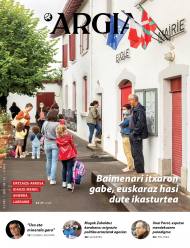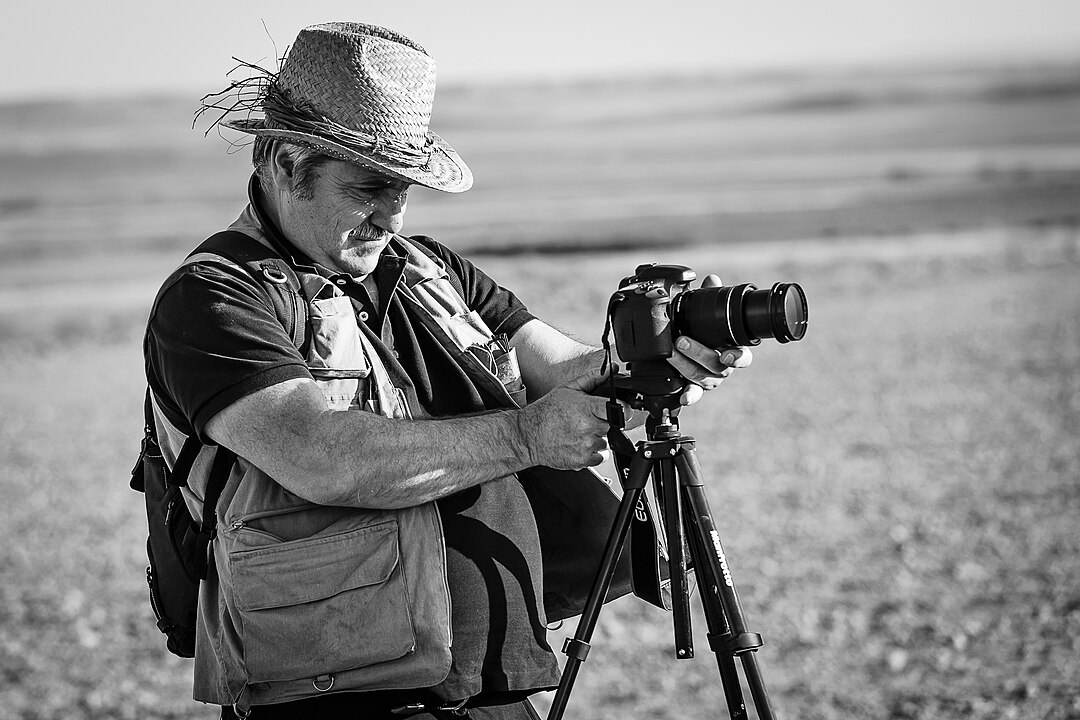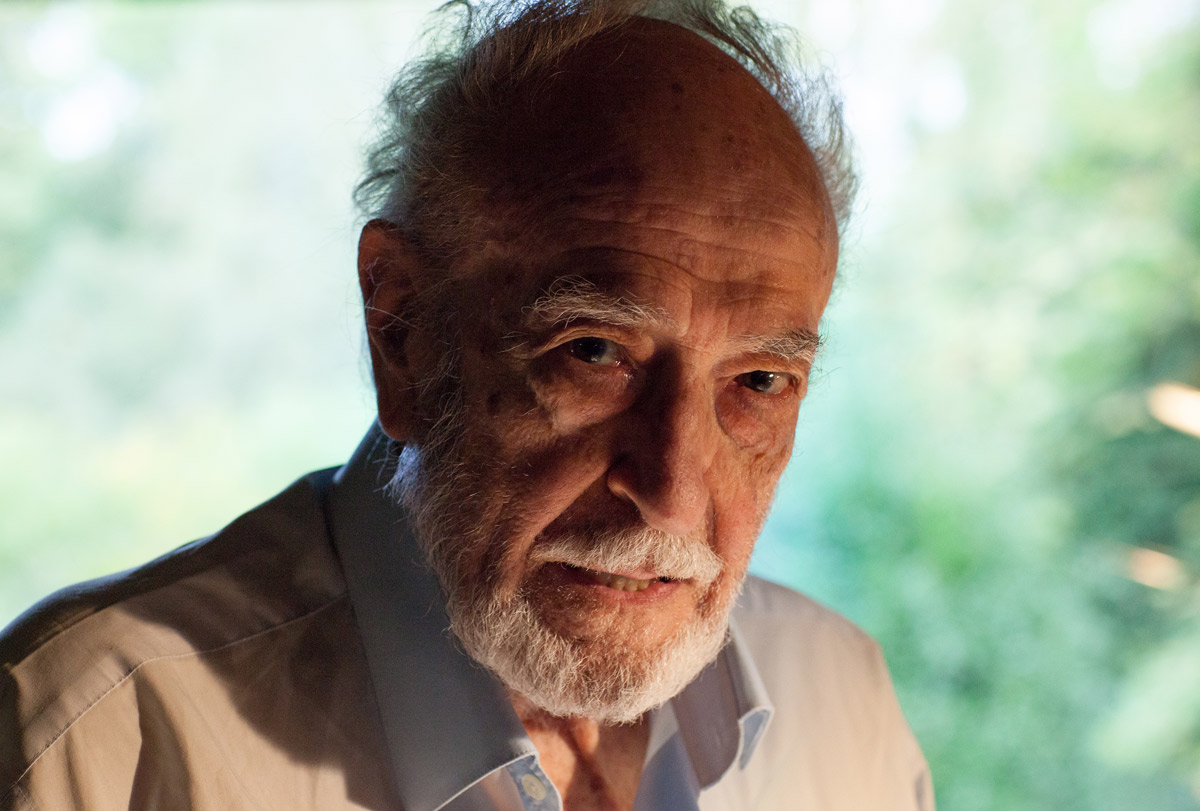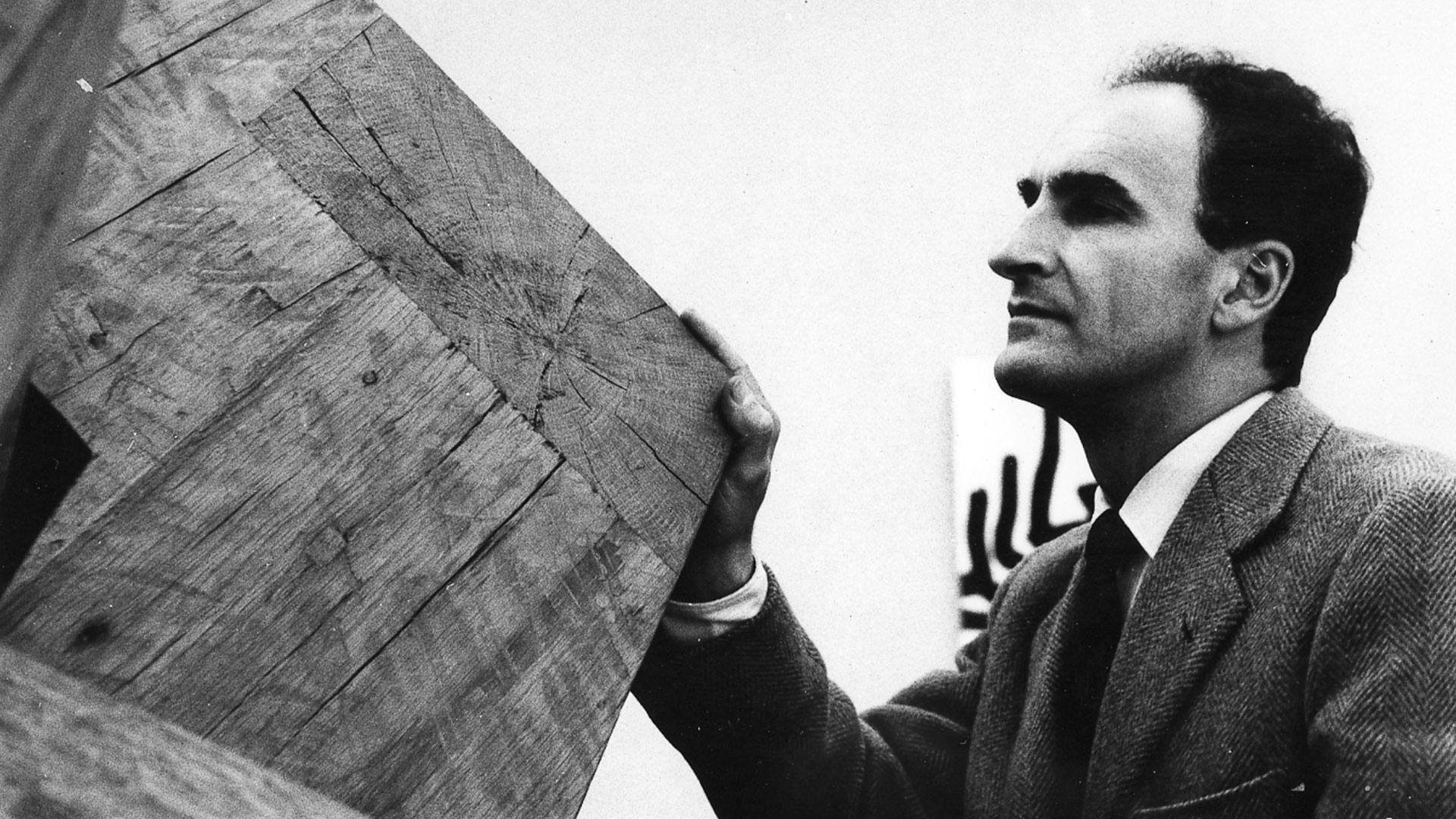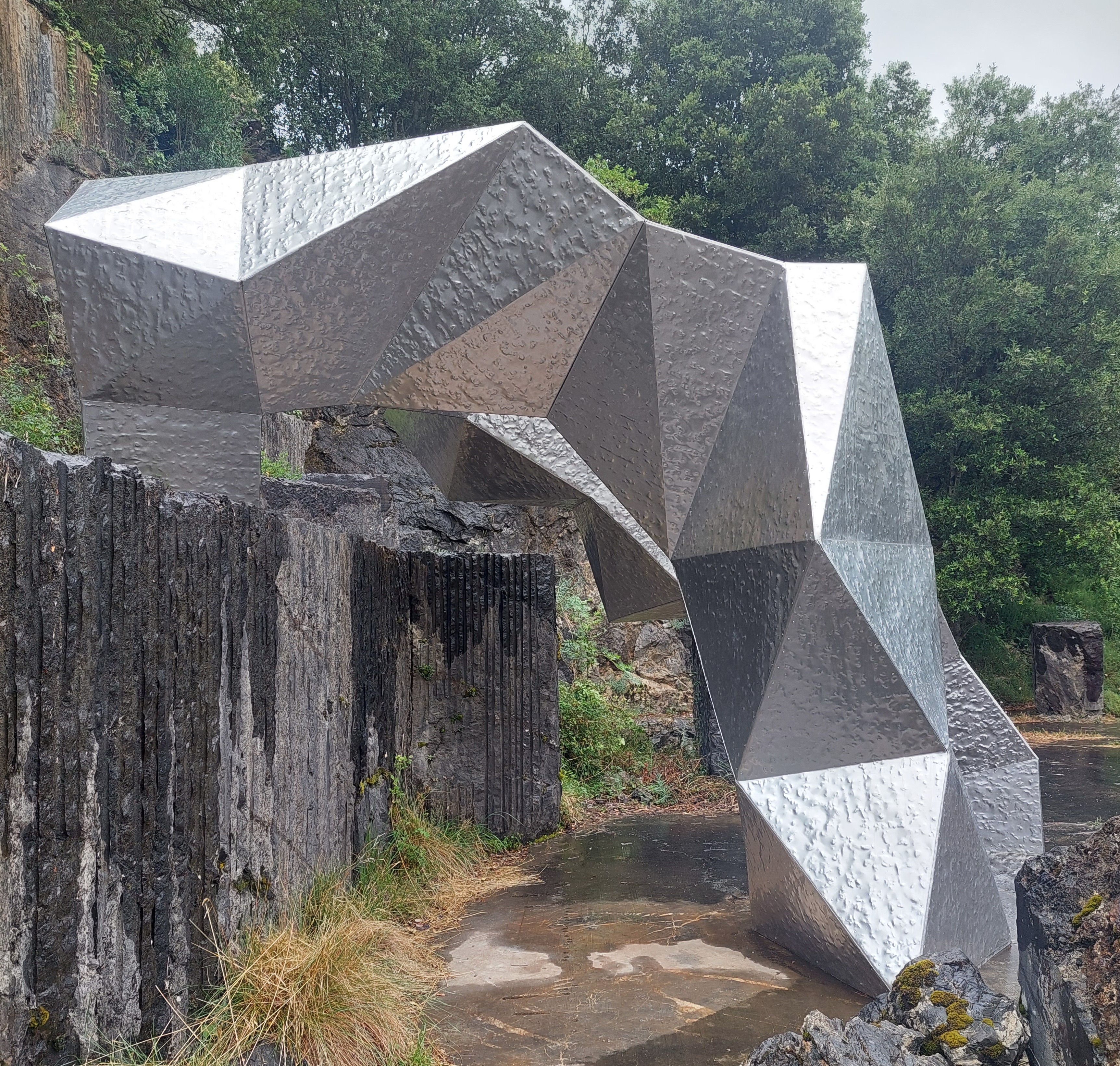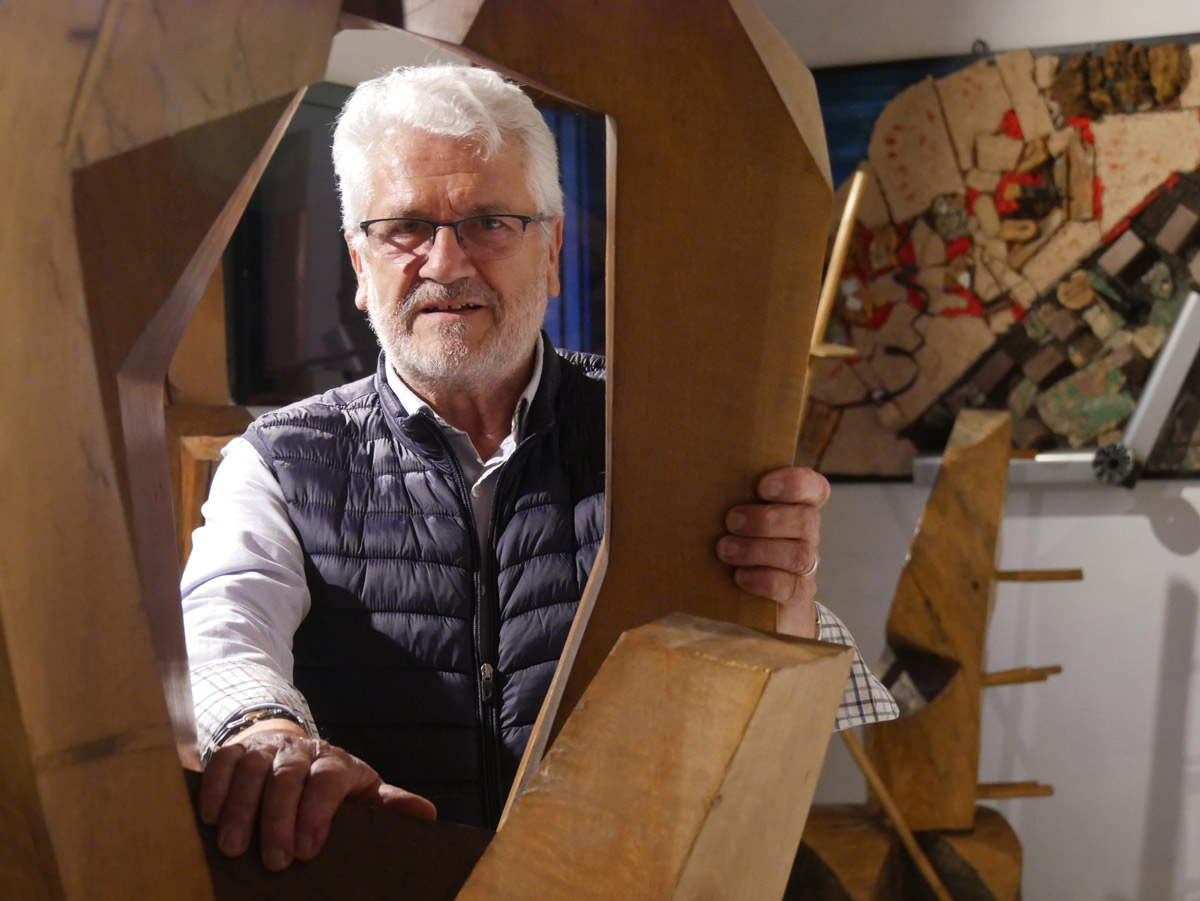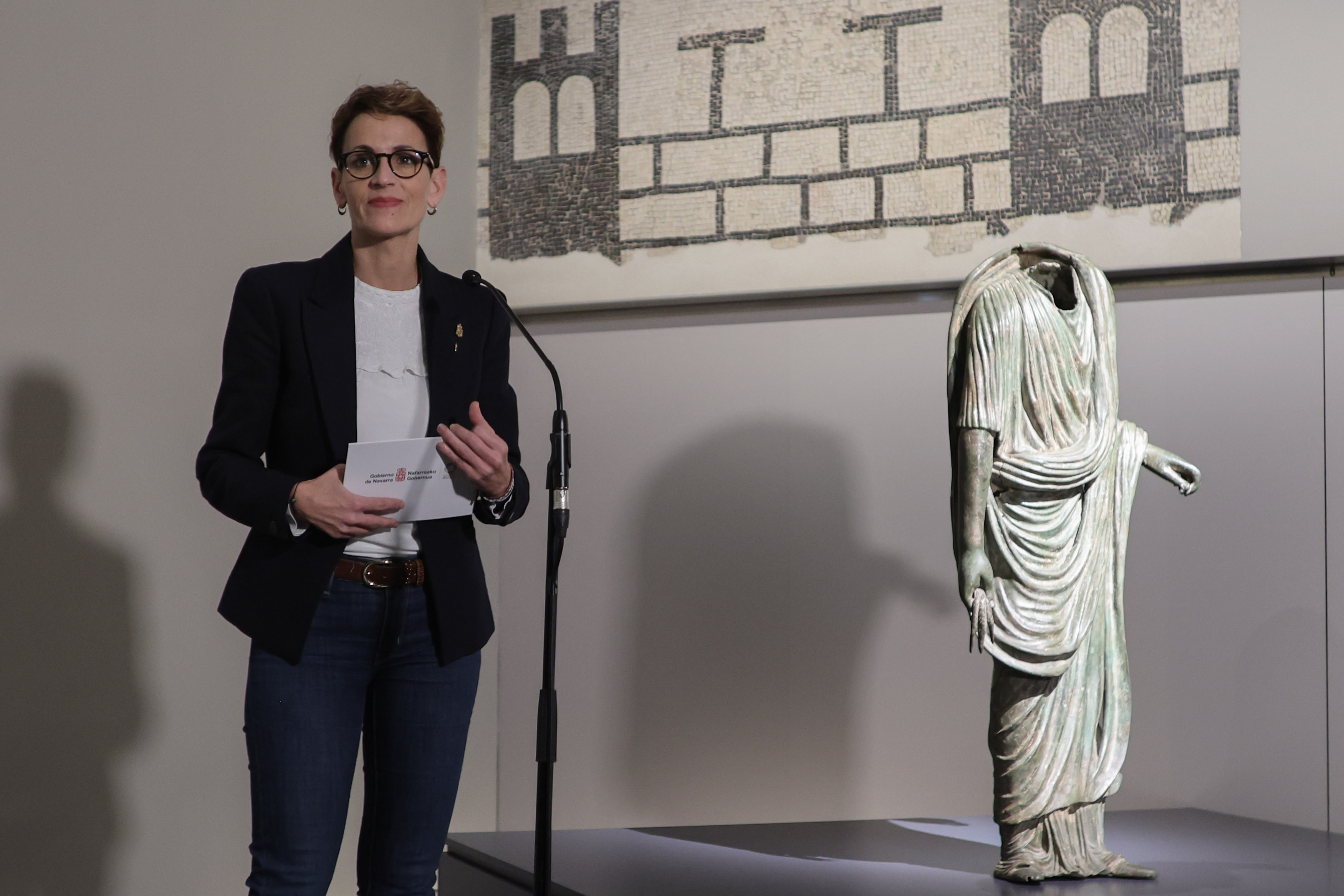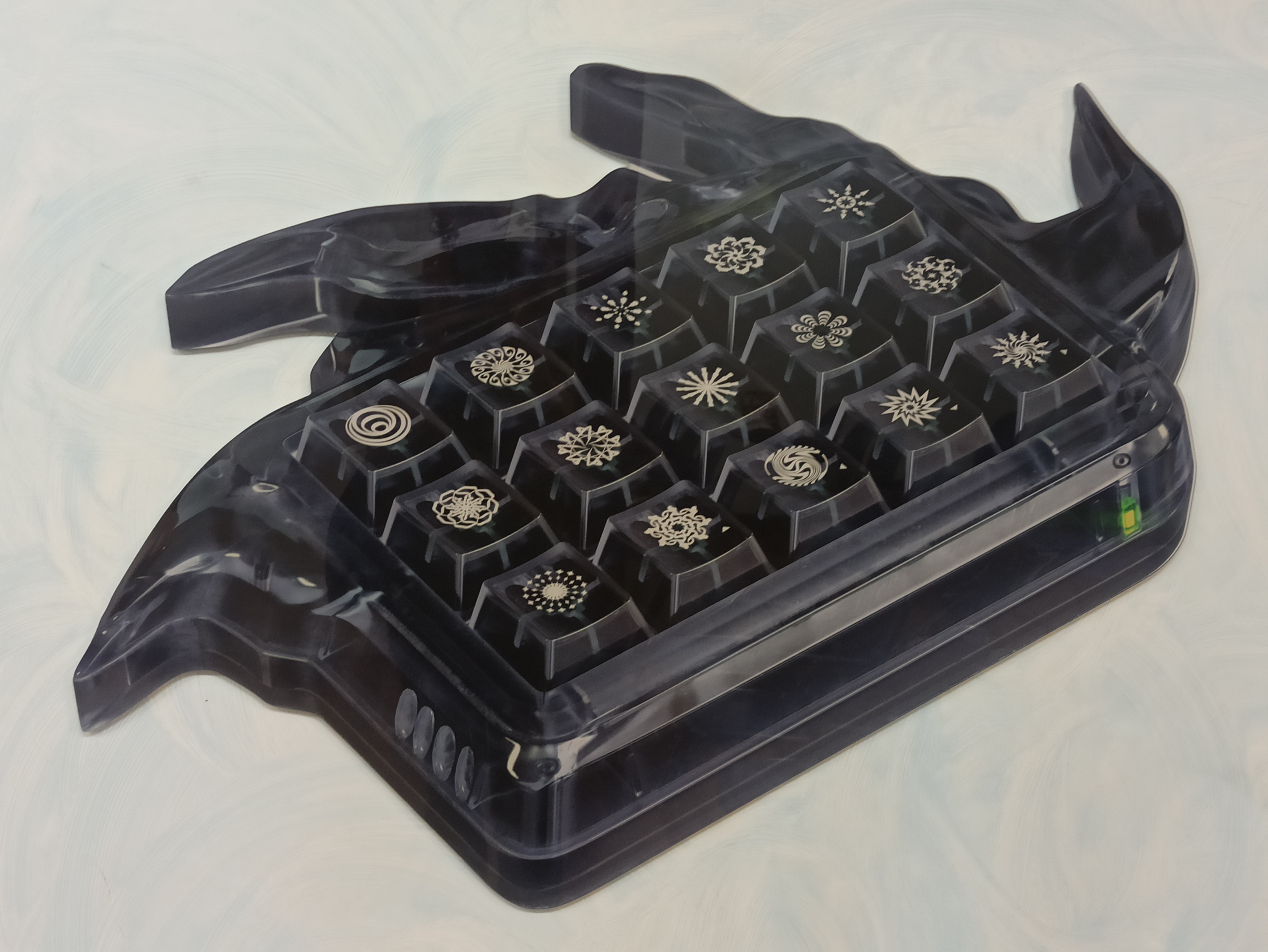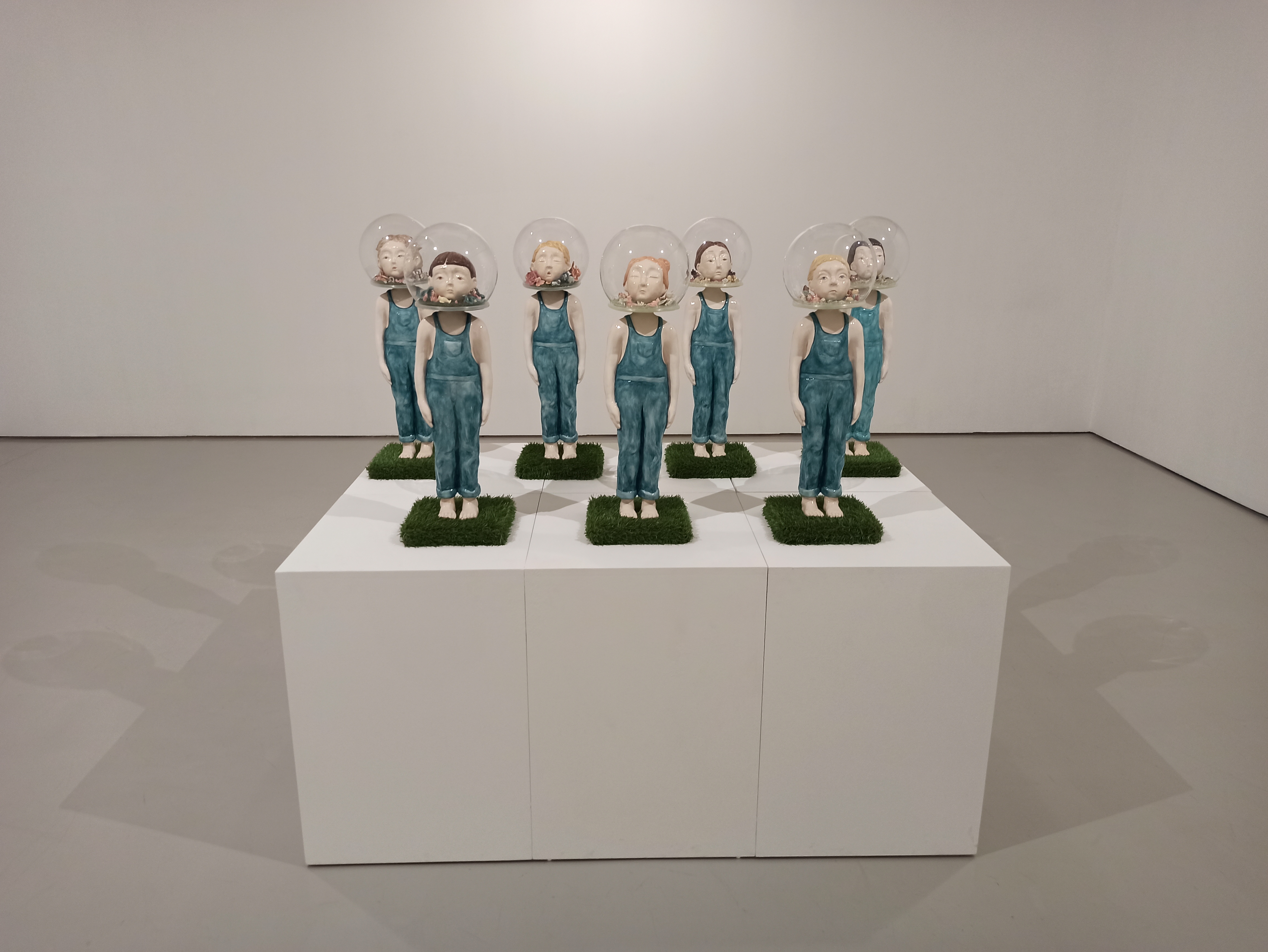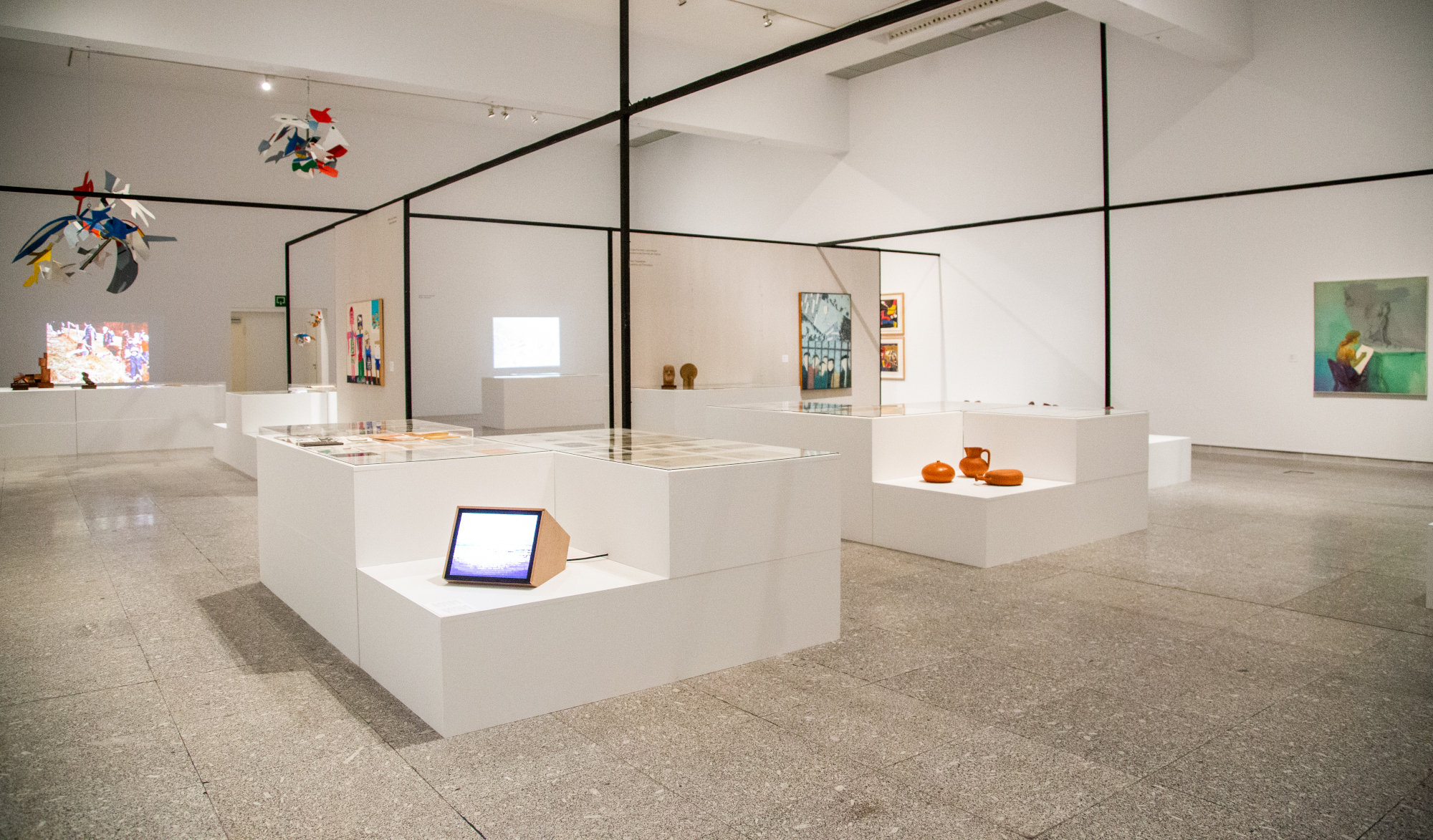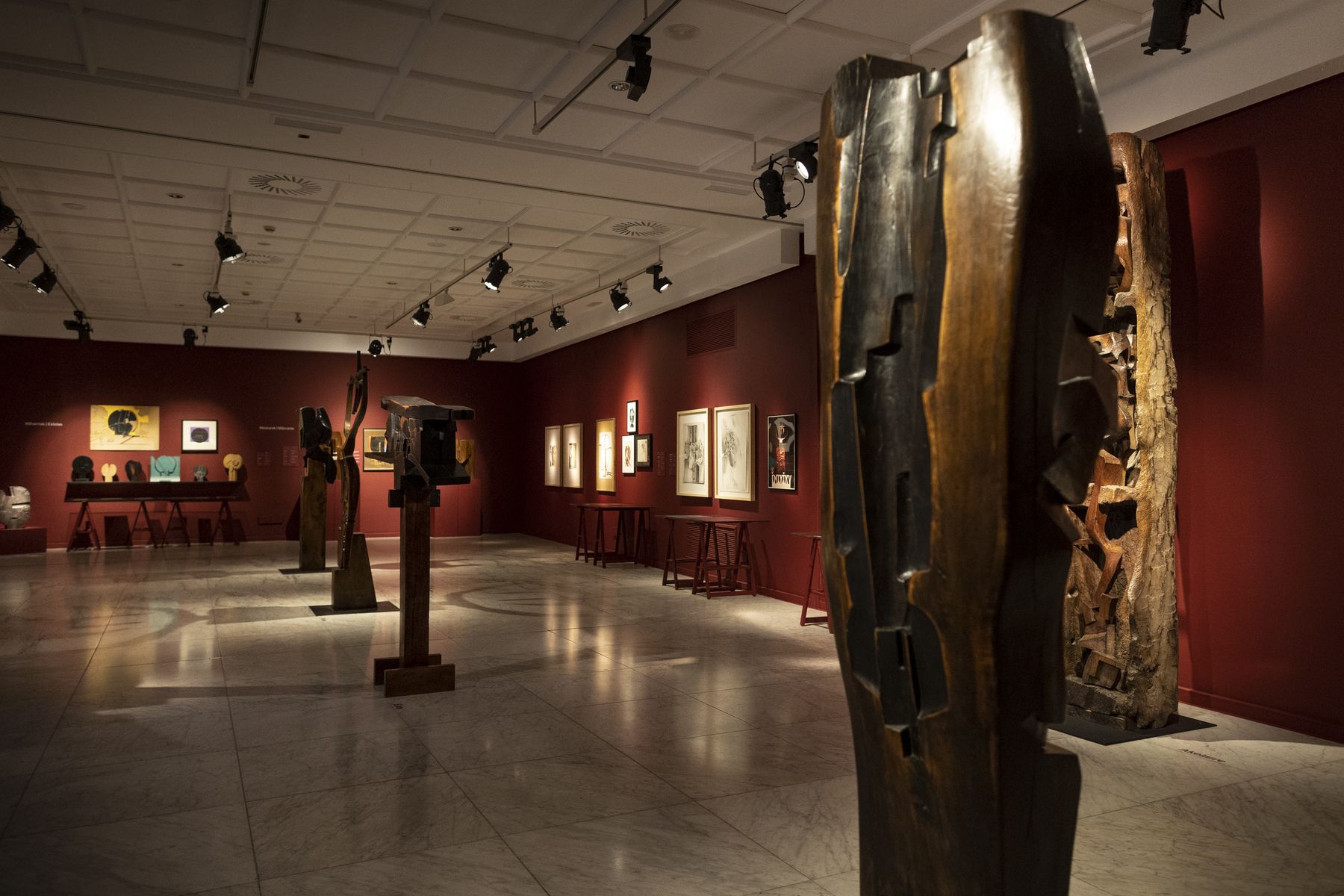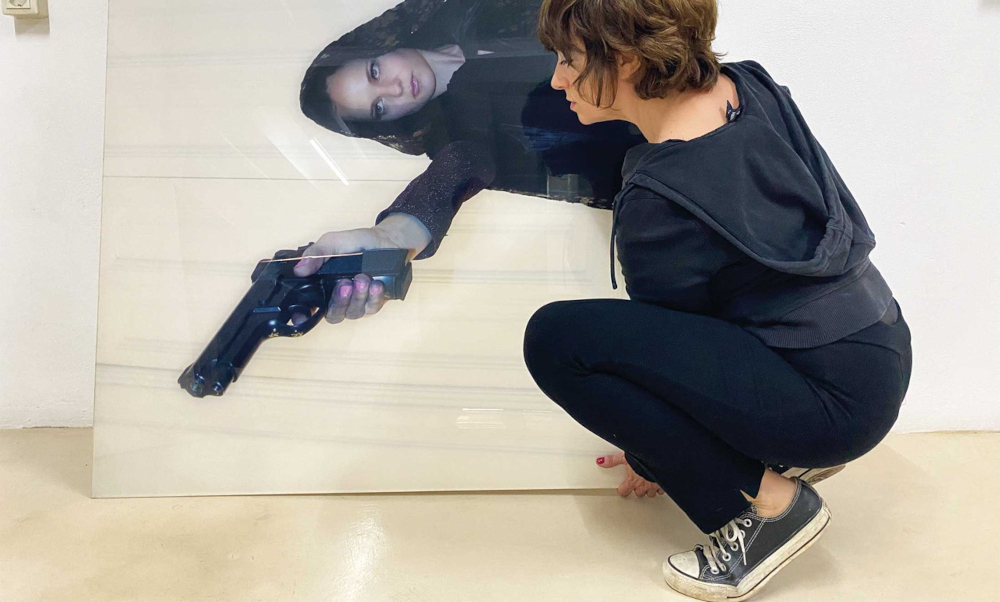"Here we have a habit of asking craftsmen to lower the price, but not Iberdrola"
- He's an artisan and artist who says we're water and mineral. Too artisan for artists and artists for craftsmen. Feel closeness and protection between stones, as in the cave. Make contemporary jewelry. At the same time, he particularly likes practical and useful works of art, such as his dishes in elegant restaurants. Now we can see on the Petrus screen in a kind of virtual colloquium with the medieval canteron in the Petrus documentary film.

Hargintza ikasi zuen Iruñeko Udal Lantegi Eskolan eta han bertan irakasle aritu zen bost urtez. Tailerra Urnietan du. Zaharberritze lanak, eraikuntzakoak, hilarriak, enkarguzko piezak, baxerak eta bere sormenezko artelanak egiten ditu harri mota eta teknika desberdinak erabiliz. “Hartea, sormenezko hargintza” da bere marka eta Haruru Filmak estreinatu berri duen Petrus dokumentaleko protagonistetako bat da. Lan hau uda osoan zehar herriz herri ari dira ematen aurkezpen gisa.
How did he become a canterer?
I always liked to draw and paint. That's why, once I finished at the institute, I studied at the Workshop School of the City Council of Pamplona, 30 years ago. I started because I liked quarries and I was also paid interprofessional base salary. It's curious, but at that time I was paid to study and now I have to pay to work and to survive.
The Pamplona school was the second workshop of the State, taking as a model the German factory schools, and was created with the consensus of all parties. A very interesting initiative.
With this school we worked on several reforms, including a portal of the Castillo Liverde Pamplona. There I was five years after I finished teaching, but I wanted to be a canterer and I opened my own workshop, first in Noáin and then in Urnieta.
What does a canterer do in the 21st century?
The janitor's office is a lost trade. I have the opportunity to do all kinds of work: they call me to do restoration work in the construction. I restored, for example, the allegory of peace that is at the base of the monument to the Fueros, such as the source of Luis Paret or the crown of the shield of the General Archives. I've also made religious sculpture. The image of San Miguel in the chapel of the Hospital of Navarra is mine.
"What do we feel like human beings when we're on the mountain or between rocks? We perceive closeness, support, and that is what I feel”
It is a very lost trade and at the same time very extensive: I can make architectural elements (walls, arches) or a size, for example. On the other hand, the quarries have always been closely linked to the funeral work. The steles were placed at the crossings and then at the cemeteries. They are works full of symbolism and are made with the hardest material of nature, stone, with the idea that they may persist forever. The things of funeral art I have on another website, because we still have big taboos around death. I've had the honor of making the steles of Lolo Rico, Joxemiel Bidor or Aitor Etxarte, recently deceased.
And besides all of this, of course, I make my own creations. I do hours and hours in my workshop in silence, and I have a lot of time to think. Four years ago, I made my first solo show in the Edertdu Hall. Panta Rei. I worked around the wave. The stone is cut by waves. When you hit it, the waves are transmitted. These waves produce pressure, and that's how the stone is cut.
.jpg)
What is your daily work like?In
our imaginary stone is closely linked to the ancient world and I am also part of ancient techniques, but I have always wanted to remove from my creations that concept of archaeology or old. I have always put modern things in my works. I also want to give bisame to a material that is so hard in itself. My work has taught me, for example, that once the stone is cut, it can be made more flexible. I once made a four-meter sheet, 5-6 centimeters thick, and I saw it folded. The stone has flexibility! I was surprised.
I really like to do research. I work around four stages of the Camino de Santiago in Navarra. These are four geometric figures, made up of four different types of stone.
I'm interested in getting to know the rocks of the place, and this has led me to study geological media. Just like the quarrier is a lost trade, quarries are increasingly lost.
What kinds of rocks do you use?
The blue stone of the County of Pamplona, for example. A very hard calcarenite on Mt. Ezkaba, very abundant in the area and origin of many toponyms: Arriurdiñeta, for example. It is the one found in the Glazisas of the Citadel and in the rocks located at the edges there are known the temperature drops, while the ones that give to the South are chemically dismantled and the ones that are to the North are perfectly.
For me, it was a great discovery, Igantzi's marble. It's wonderful: white with blue beta. In Igantzi, there's a huge quarry. Now they use it to make concrete and fine stones, and I began to use as poetic justice this beauty filled material to make straws. The tableware I make for elegant restaurants are made with that marble.
I also use Eratsun marble. In its day this material was very important, but now it is not used. The quarry is closed because it did not comply with environmental standards. Although the quarries of Alaitz or Oskia are open, they are only used for thin making.
In the fifth, there's a magnesite quarry. It's a giant, but you have to ask a lot of permissions to get into it.
I want to assert the trade and the matter speaks many times alone. Materials give very varied answers, and that's a wonderful question.
.jpg)
Are you a canterer and sculptor?
I see no difference. I take it for granted. It is difficult to describe a trade that is disappearing. In any case, I always demand the dignity of our work.
For many years I have gone to the trade shows to sell my jobs, but now I don't. I'm tired of hearing that my jobs are expensive. I just want to live from this. Here we have the habit of asking the craftsmen to lower the price, but not Iberdrola. We demand more of the weaker than the richer. That is why we artisans often do what can be sold on the market and thus enter a vicious circle.
At trade shows, people often ask me how much a shield is worth. I don't like shields with connotations, but I do them because I have to eat. I think people like it because there's a certain idealization of the Middle Ages. And some thinkers think that's what happens because we live in neo-feudalism. The lords of then were lords of Leun or I don't know where, while the current masters of Zara or Microsoft and us their slaves. This is becoming increasingly clear.
In any case, my question is, what do you want a shield for if you're not noble? We have a lot of confusion and ambition is very widespread.
So the frontier between craftsmen and artists is very thin, right?
Yes, it is. There is a growing tendency to make creative crafts. Contemporary crafts are the only way forward. It is becoming increasingly clear that you cannot always do the same to be able to sell. Growing competition. The Chinese will do better than you, surely.
I think craft is the tool you have at your disposal to make an idea come true. Technology is always used. Manual processing is praised, but it is not only that that guarantees its value.
For artists, I'm too artisan, and for artisans, I'm an artist. Art today is something that is increasingly being worked on conceptually and not with hands. The workshop of the Faculty of Fine Arts of the UPV/EHU has been used by very few people. Now we see 16th-century furniture and we perceive it as arts, but in its day it would be nothing but works of a good craftsman.
How have your dishes come to the great restaurants?
I have always called for useful works of art, and that is why I make stone dishes, which keep the cold and the heat very well.
They're used in Mugaritz to serve ice cream, for example. They want Mugaritz to be sensory with her new kitchen. They look for how to surprise diners, both in restaurants and in homes, and to do so they are suitable these stone vessels, which adapt perfectly to the form of the mano.Para demarcation made four marble plates towers in Igantzi. They're actually sculptures, but at the same time dishes.
I take advantage of the characteristics of the stones to make tableware and cookware. For example, the Ofita stone holds very high temperatures. It was used before to give a disturbing taste to the flesh.
I work with the demarcations and have done things for Aithor Zabala (Somni restaurant of Los Angeles) for the restaurants of Hélène Darroz in London and Paris, and the last for Aitor Jerónimo, the Basque Kitchen restaurant of Singapore.
"Art is today something that is increasingly being worked on conceptually and not with hands. The UPV/EHU Faculty of Fine Arts workshop is being used by very few people”
What is Petrus?
Petrus emerges as a cultural initiative based on the relationship between Simeón Hidalgo, author of the Petrus Museum. The authors wanted to draw the lines that link Romanesque art with the creative canopy of the 21st century, as well as the divergences between the creative process of the museum and the artistic business. Rubén Marcilla and Helena Bengoetxea from the producer Haruru Films met this museum located in the village of Lizarraga, in Izagaondoa, and they called me to do something.
Simeon, a specialist in Art History and Theology, discovered that a quarrier’s fingerprint could be followed because identical foliar loops appeared on the capitals of different places. In addition, in the church of Gergitain, the signature appeared in a capitel: Petrus fecit me. Petrus was a medieval songwriter and his name is not very common, since in his day the puppeteers were not known geniuses and did a very anonymous job. Among the works in Navarre, for example, we only know about 8 to 10 signatures.
The Romanesque, who intended to spread the spirit of imperial Rome throughout Europe, shows in rural Romanesque how they published messages to make them reach the public through images.
The Petrus initiative is also linked to the disappearance of small peoples. This is clearly seen in that Romanesque trajectory that we do in the movie. The Petrus project aims to enhance local art and rural development through cinema.
.jpg)
How is our Romanesque preserved?With an important
heritage, a lot of money has been invested, but it must be borne in mind that later part of that investment will be returned, for example, through tourism. The Cathedral of Vitoria is a clear example. That is, after all, knowing how to get the best out of the worst.
Is there a lot of difference between Petrus's and his way of working?
I don't know if there would be any big differences. They moved many times from town to town and from city to city, but today the same happens when a new city is made in the corners and flavors of the world. You have to spend many hours in the life of the contemporary quarrier and work non-stop in creation to be able to live from this.
Why do we Basques love stone so much?
We are water and mineral. That's why our relationship with mineral is fundamental. Ours is a stone village. This is how Gabriel Aresti and Oteiza explained that crómlech is a magical space. These are symbolic elements, and this collective cosmogony that we have in our country comes from these ideas. This also has to do with the presence of great artists such as Oteiza, Chillida or Mendiburu in the Modern Age. Ours is the people of sculptors.
Ulibarri, for his part, stressed the closeness of this people to stones. Esthetics referred in their work on the Basque Country to the concept of “Euskaro gremial acquis.” From the Pyrenees to here and in everyday elements, we are a people that shows this aesthetic beauty in the smallest details. For example, utensils for making cheese or used in the farmhouse were designed according to these criteria. They're aesthetically nice and nice, but they're both useful and for me that's the ultimate goal.
Jorge Oteiza was talking about this. Notions for a Basque philology of our pre-Indo-European explained in his work the great stone he had about this: What do we feel like human beings when we're on the mountain or between rocks? We perceive closeness, protection, and that's what I feel.
Behin batean, gazterik, gidoi nagusia betetzea egokitu zitzaion. Elbira Zipitriaren ikasle izanak, ikastolen mugimendu berriarekin bat egin zuen. Irakasle izan zen artisau baino lehen. Gero, eskulturgile. Egun, musika jotzen du, bere gogoz eta bere buruarentzat. Eta beti, eta 35... [+]
On Monday afternoon, I had already planned two documentaries carried out in the Basque Country. I am not particularly fond of documentaries, but Zinemaldia is often a good opportunity to set aside habits and traditions. I decided on the Pello Gutierrez Peñalba Replica a week... [+]
The search, the continuous search for a path, implies discovering what we do not want or expect. An artist should feed this appetizing search if he wants to keep his spirit alive. Your career is also going to need a big head office. Looking for new ways, uncovering and expanding... [+]
I get contradictions in art competitions. On the one hand, they place artists and works of art within the dynamics of competitiveness, leaving aside the transformative and collective character of art and placing them within the mercantilist logics, but it cannot sometimes be... [+]
Eskuin muturreko ekintzaileei leporatu diete eskultura bandalizatu izana: Hau kaka euskalduna da idatzi dute frantsesez, eta Heil pepito agur nazia margotu. Jean-René Etxegarai auzapezak jakinarazi du salaketa jarriko dutela. Gainera, Frantziako Alderdi Komunistaren... [+]
In the Plaza de los Fueros de Vitoria-Gasteiz there is a new metal sculpture that welcomes the exhibition of Nestor Basterretxea (Bermeo, 1924 – Hondarribia, 2014). The exhibition brings together more than 300 works created by artists from different areas, such as posters,... [+]









